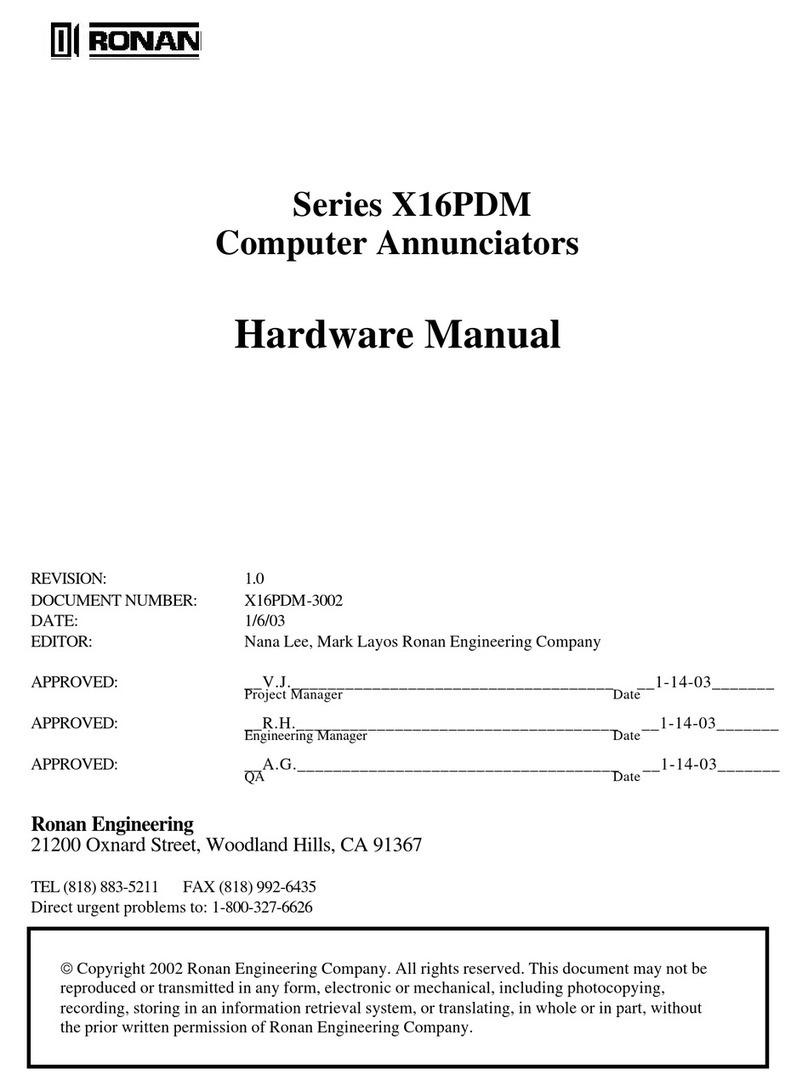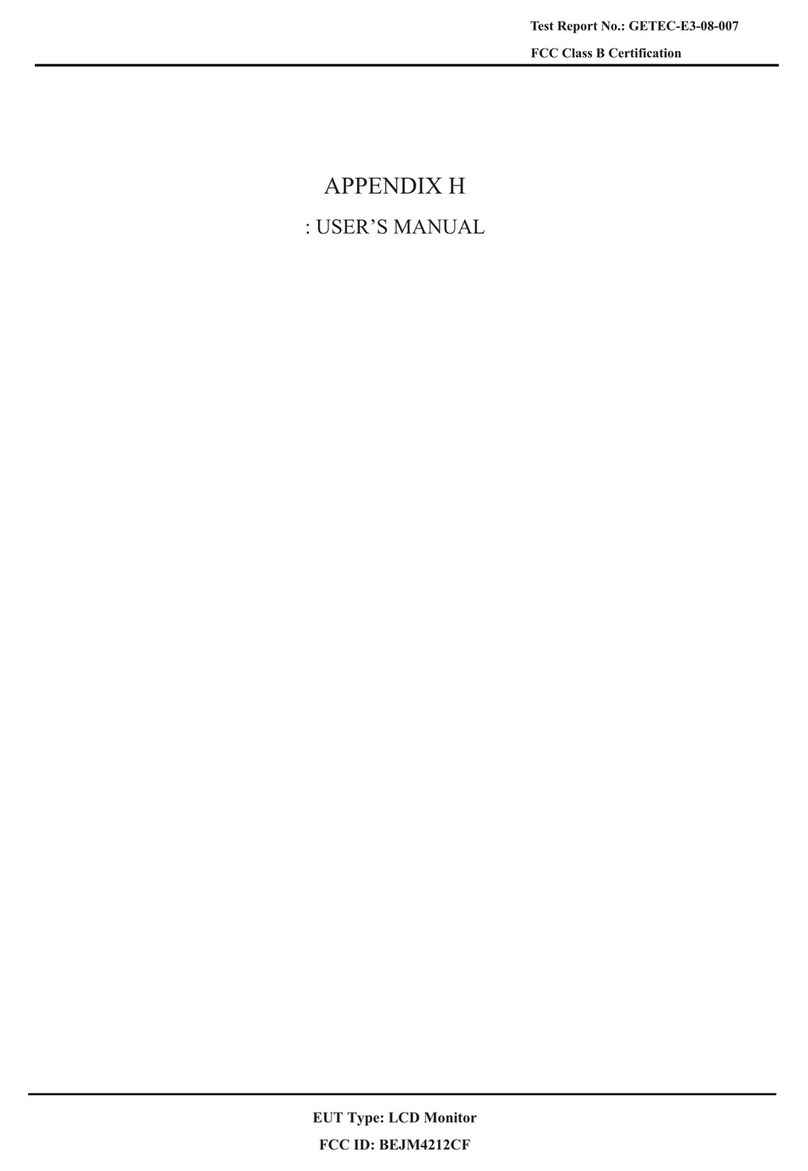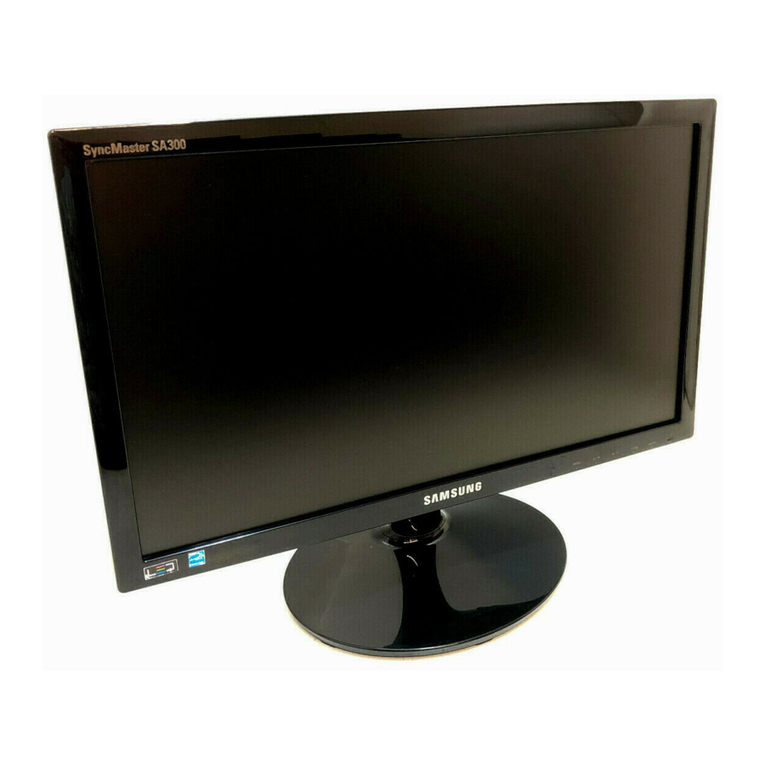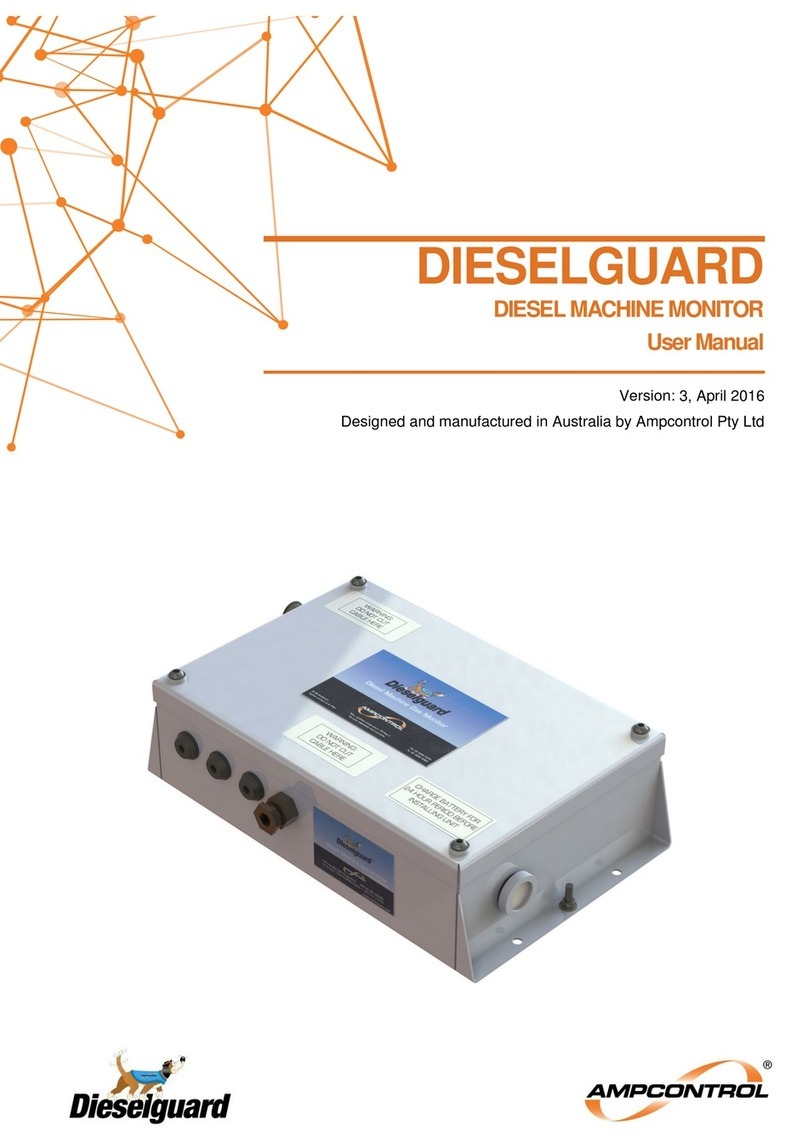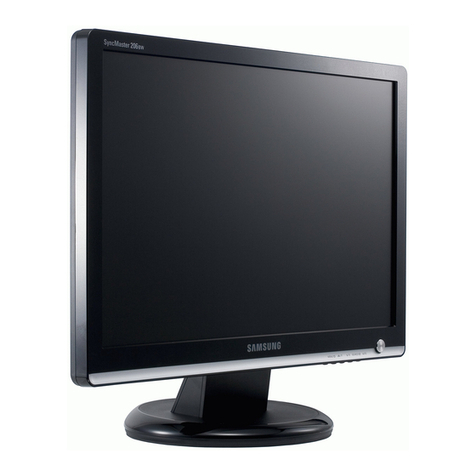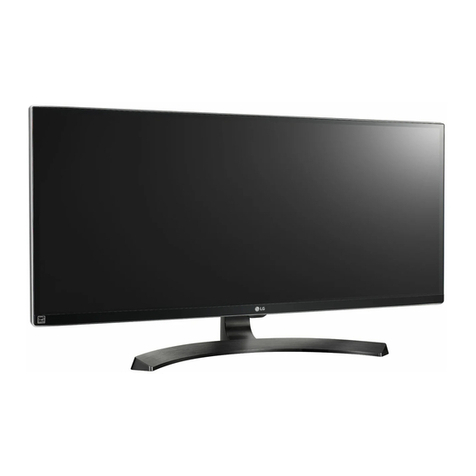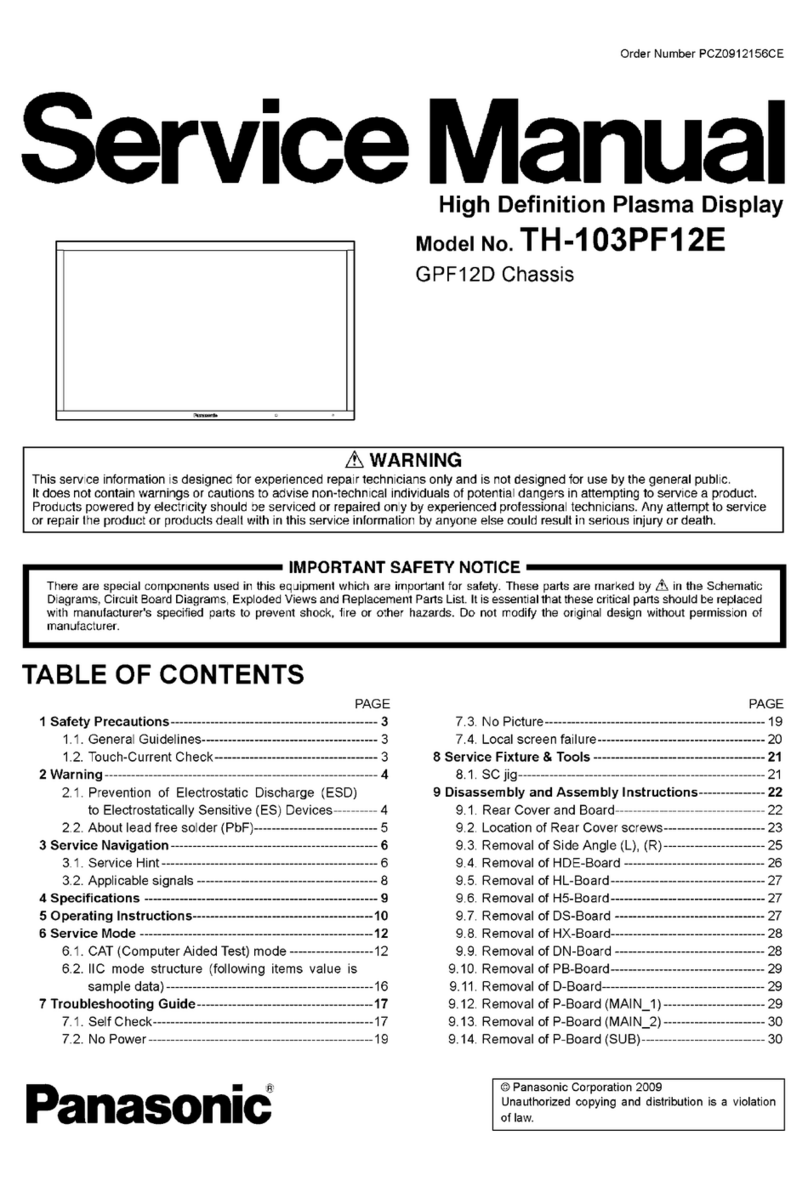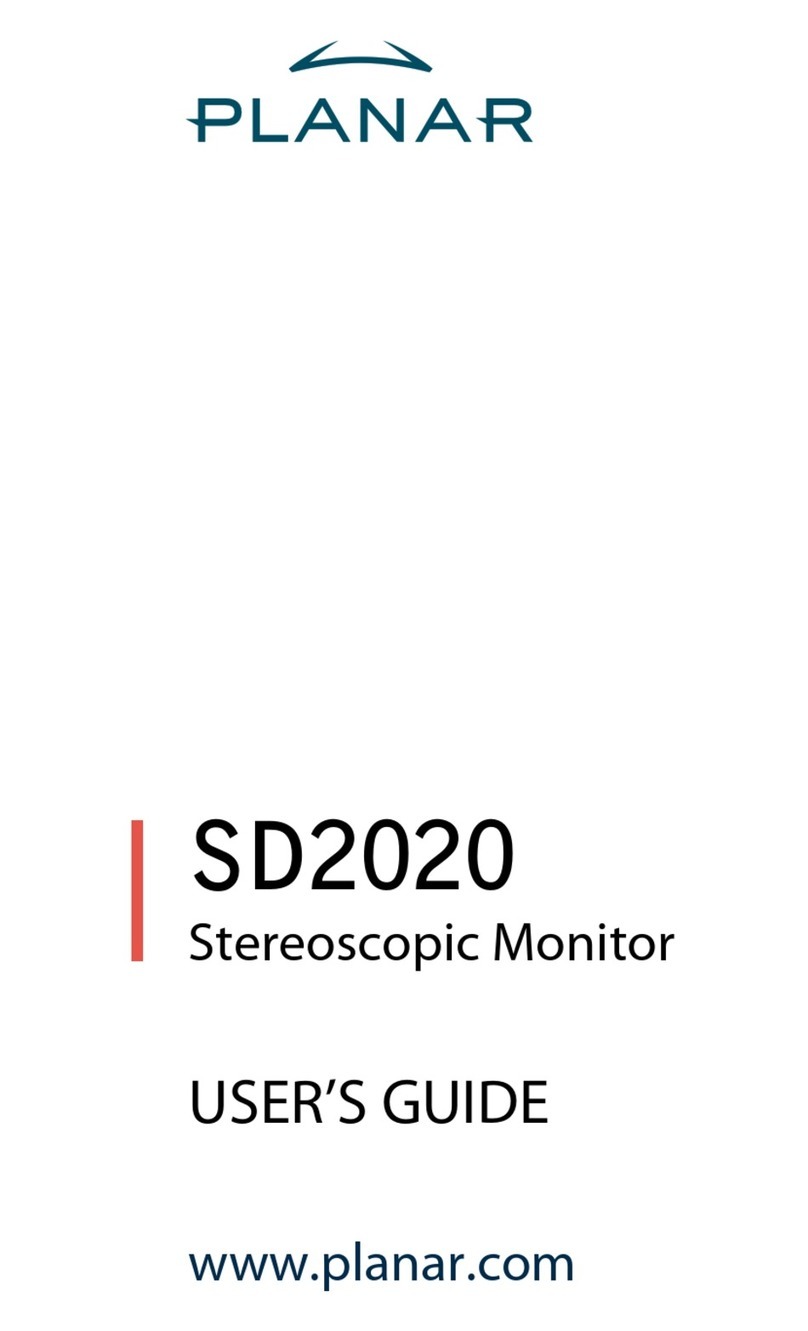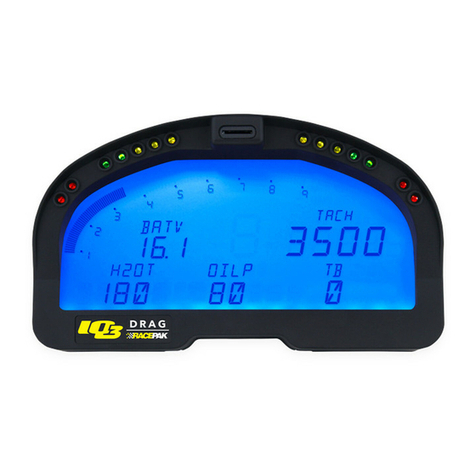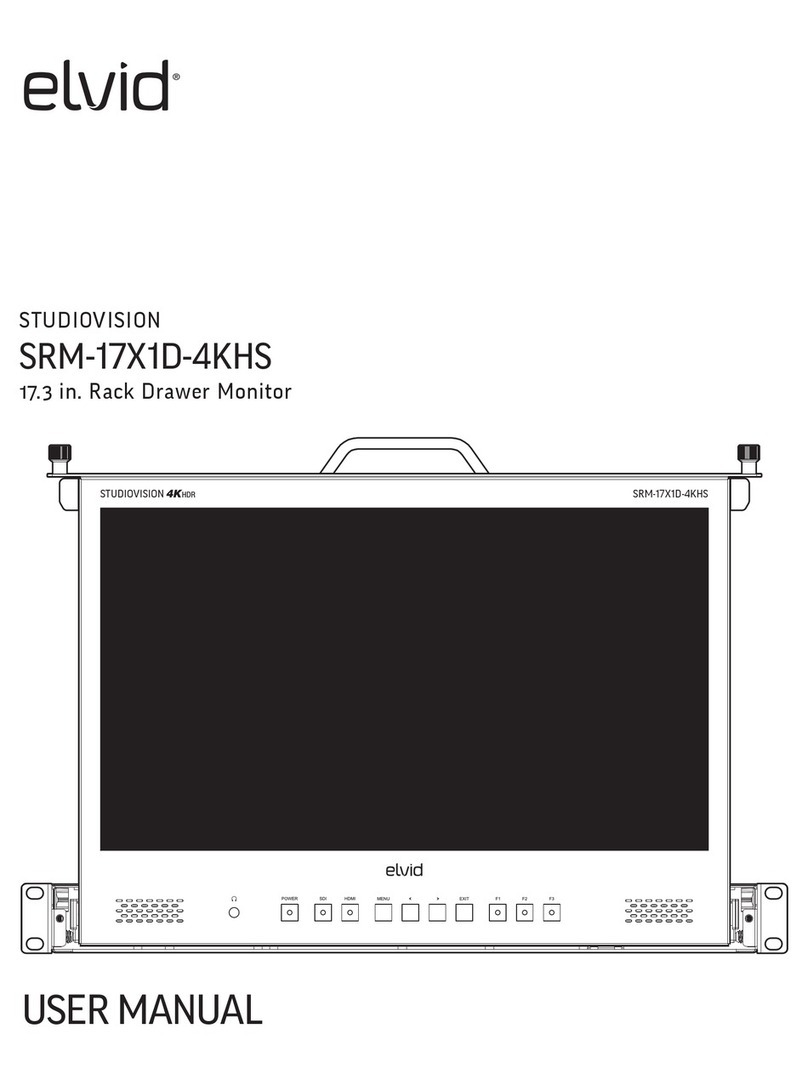Ronan X 90 Series Parts list manual

1
012208
Instructions
and
Operating Manual
Series X 90
Point Level Monitors
Programmable
Microprocessor
POINT LEVEL MONITORS SERIES X90
Instructions and Operating Manual
Customer’s Name ________________________
Customer’s P.O. No. ______________________
Ronan Job No. ___________________________

2
012208
TABLE OF CONTENTS
1.0
2.0
3.0
3.1
3.1.1
3.1.2
4.0
4.1
4.2
4.3
5.0
6.0
7.0
7.1
7.2
7.3
7.4
7.5
8.0
9.0
10.0
11.0
11.1
11.2
11.3
11.4
11.5
11.6
11.7
11.8
11.8.3
11.8.4
11.9
11.10
12.0
12.1
12.2
General Description…..........................................................................................................
Specifications (Standard)……..............................................................................................
Theory of Operation…......................................................................................................…
Optional Gaging Configurations…….……………………………………………………………
Remote Probe….………………………...………………………………………………………...
Integral Switch...……………………………………………………………………………………
Functional Options…............................................................................................................
High-Limit Process Alarm….................................................................................................
Low-Limit Process Alarm…..................................................................................................
Failure Alarm….....................................................................................................................
Installation and Electrical Connection—General………..…..................................................
Setup………...…...................................................................................................................
Calibration Controls..............................................................................................................
Referencing……………………………………...……..........................................................…
Push-to-Test Function….………………………………………………………………………….
Calibration with Process Material………………………………………………………………...
Calibration without Process Material….…………………………………………………………
Response Time…………………………………………………………………………………….
Implementation.…………………………………………………………………………………….
Menu Variables……………...............................................................................................…
Troubleshooting…................................................................................................................
Radiation Safety………….....................................................................................................
Field Intensity Calculation.....................................................................................................
NRC Regulations……….......................................................................................................
Periodic Leakage Test………………....................................................................................
Radiation Publications………………….................................................................................
Abandonment and Disposal……….......................................................................................
Prohibition of Operation........................................................................................................
Mounting and Start Up..........................................................................................................
Well Source Holders SA-4,SA-10,SA-15……...................................................................…
Source retraction procedure………………………………………………………………………
Wiping the test points…….………………………………………………………………………..
Standard Sources SA-1,SA-8…...........................................................................................
Mandatory Reporting............................................................................................................
Leak Test Procedures for Sealed Sources……....................................................................
Ronan Leak Testing Service…………..................................................................................
Using the Leak Test Kit……………......................................................................................
3
3
4
4
4
4
4
4
4
4
5
5
5
5
5
6
6
6
6
6
7
7
8
10
11
11
11
11
11
12
12
12
13
13
14
14
14
Warranty Ronan warrants equipment of its own manufacture to be free from defects in material and
workmanship under normal conditions of use and service, and will repair or replace any component
found to be defective, on its return, transportation charges prepaid, within one year of its original pur-
chase. this warranty carries no liability, either expressed or implied, beyond our obligation to replace the
unit which carries the warranty.

3
012208
1.0 GENERAL DESCRIPTION
The Ronan Series X90 Point Level Monitor economically
and reliably solves many process problems in which
noise, temperature, abrasive or corrosive conditions
preclude the effective utilization of sonic, capacitative,
float or other techniques. This is a non-contact system.
Normally, a small Cesium-137 radioisotope source is
housed in a lead-filled shielding enclosure known as the
source holder. This holder is equipped with a shuttering
mechanism and the means for containing the radiation
and collimating or directing the radiated energy toward
the sensor, which is directly opposite the source along a
line or level to be measured. Radiation in all directions is
attenuated to a safe value by the lead shielding. The
source holder is mounted on or adjacent to the vessel
whose content it is desired to monitor.
When the source holder shutter is opened, radiant
energy is directed toward the sensor. In the absence of
the process, this sensor sees only a small amount of
radiation but, when the process is present, a large
percentage of this radiation is absorbed. This absorption
of radiation by the process causes a change in the
radiation at the sensor. When this occurs, a relay contact
signals that the level change has been observed.
The passage of radiant energy through the process
causes no contamination and cannot make the process
or container walls radioactive. These systems may be
used anywhere, including the food processing industries.
For most applications, all components of the system are
externally mounted. Therefore, installation is simple and
requires no major mechanical modification or down-time.
The standard Ronan Model X90-301(V) gamma switch
uses Cesium-137 as the source of gamma rays. Cesium-
137 is a 0.66 MEV gamma ray emitter with a half-life of
30 years. The radioisotope material is sealed in a
double-welded, stainless steel capsule. The source type
and strength (activity) supplied depends on the individual
application, and is printed on the yellow and magenta
caution label affixed to the 3 source holder. The standard
source holder is lead-filled and equipped with a two-
position ON/OFF shutter mechanism. The handle and
shutter mechanism can, by means of a combination
padlock, be securely locked in the OFF position during
shipping, installation, storage or process-down intervals.
RLL source holders have no on/off shutter, only a shield.
Well sources are supplied with actuator rods, which can
be used to extend the source into the vessel or retract
the source into the storage source holder.
CAUTION: Any malfunction of the source holder must
be immediately reported to Ronan Engineering for repair
or replacement of the source holder. Under no
circumstances may the source holder be taken apart.
Should it be necessary to ship the source holder back to
Ronan, contact Ronan Engineering for detailed shipping
instructions.
A Geiger-Mueller tube is used as the sensor for
detecting the gamma radiation. The G-M tube consists of
a gas-filled cylinder with a central anode. The anode is
connected via a high ohmic resistance to a dc voltage of
500 V. Conduction occurs when the gamma radiation
ionizes the gas in the tube. Each ionizing event produces
a pulse, the rate of these pulses being proportional to the
field strength of the ionizing radiation, i.e., incident field
intensity. The output of the G-M tube is processed by an
electronic circuit in the SWITCH301 module and the
material level is indicated by either an ALARM or
NORMAL signal.
A scintillation detector can also be used as the sensor
for detecting the gamma radiation field. The scintillation
detector consists of a crystal which scintillates when
exposed to radiation. A photo-multiplier tube is used to
convert these scintillations of light into electrical signals.
This output is processed by an electronic circuit in the
SWITCH301 module and the material level is indicated
by either an ALARM or NORMAL signal.
_____________________________________________
2.0 SPECIFICATIONS (STANDARD)
The X90 is a microprocessor based instrument available
in two designs. The Model X90 Detector with integral
electronics has a combined detector and switch
assembly located at the vessel. The detector with remote
electronics module may be field-located or remotely
located in a control room
Detector: Integral: Geiger-Mueller tube Remote:
Geiger-Mueller tube or scintillation detector
Radiation at Detector: Integral: 0.1 mR/hr min.
Remote: 0.1 mR/hr min. /GMTube or 0.005 mR/hr/
scintillator
Detector Housing: Integral: 4” Schedule 40 carbon
steel pipe (type 304 stainless steel also available);
mount to flat plate bracket Remote: Type 304 stainless
steel; explosion-proof housing; mount with conduit clamp
Housing Classifications: Integral: Class I, Division 1,
Groups A, B, C, D; Class II, Division 1, Groups E, F, G
Remote: Class I, Division 1, Groups A, B, C, D; Class
II, Division 1, Groups E, F, G
Ambient Temperature Range: Integral: -40° to 185°F
(-40° to 85°C) Remote: -40° to 185°F (-40° to 85°C)
Power: Integral: 115/230 VAC ± 15%, 40/60 Hz
Remote: 115/230 VAC ± 15%, 50/60 Hz
Power Consumption: Integral: 7 watts per alarm
Remote: 7 watts per alarm point
Relay Output: Integral: DPDT 3 A at 30 VDC; 3 A at
120 VAC Remote: DPDT 3 A at 30 VDC; 3 A at 120

4
012208
Failure Alarm: Integral: Included Remote: Included
Time Delay Range: Integral: 0.5 to 20 seconds (10 or
20 seconds normal); jumper-selectable Remote: .05 to
20 seconds (10 or 20 seconds normal); jumper-
selectable
Display: Integral: LED status indicator Remote: LED
status indicator
Accuracy: Integral ± 1/8” Remote: ± 1/8”
All equipment approved by CSA.
—————————————————————————
3.0 THEORY OF OPERATION
The Ronan Series X90 gamma switches provide an
alarm signal whenever the radiation field intensity at the
detector changes by more than its predetermined value.
The variation in the field intensity may be due to either a
change in the level (at the limit), or a change in the
density of the process material in the radiation beam
path. In a typical arrangement, the X90 detects the level
of liquid in a vessel when it has exceeded a
predetermined limit. The level limit is defined by an
imaginary straight line drawn from the source to the
detector.
Figure 1: Source and Detector
When the feed valve is open, liquid is fed into the vessel
and the liquid level rises. The liquid level will rise until it
interrupts the gamma ray beam. There is then a change
in the field intensity at the detector due to absorption by
the process of some of the energy present in the beam,
and the instrument puts out an alarm signal in the form
of a relay contact changeover. This signal may be used
to close the feed valve and/or activate an annunciator.
As the liquid is used from the vessel, the level will fall,
thus again exposing the detector to the gamma radiation
and the feed valve will be opened when the contacts
revert to normal.
This is an example of a high limit switch, i.e., the process
level is not allowed to rise above a certain limit.
Conversely, the source and the detector may be lowered
to below the liquid level and the system functions as a
low limit switch, in which case the system will produce an
alarm when the liquid level falls below this low limit. The
liquid itself may be under pressure at high temperature
or even corrosive, but its characteristics will not affect
the switch, since the system components are outside of
the vessel.
A time delay based on the measurement controls the
interval between radiation level change and alarm. A
hysteresis band about the required level prevents
fluttering and spurious alarm situations.
3.1 Optional Gaging Configurations
3.1.1 Remote Probe: T h e Ro n a n
Remote Probe (located on vessel) with the X90-301
switch electronics may be located in a general
purpose or Division II location. This is the most
widely used configuration.
3.1.2 Integral Switch: The Ronan Model Integral
Switch in an explosion-proof housing is usually
specified when the switch electronics cannot be
located in a general purpose or Division II area. It
may be used when the vessel is easily accessible
for calibration and maintenance.
—————————————————————————
4.0 FUNCTIONAL OPTIONS
4.1 High-Limit Process Alarm
The Process alarm relay will change over when the
level of process material rises above the set limit.
4.2 Low-Limit Process Alarm
The process alarm relay will change over when the
process level falls below the set limit.
4.3 Failure Alarm
In the case of the high-limit switch, under normal
conditions the detector receives full radiation and
produces an output. This output will fail, producing
an alarm when either the radiation is interrupted by
the process level rising to above the set limit or the
detector or its power supply fails. However, if the
detector or power supply fails, a failure alarm will
be actuated, indicating the problem is in the unit.
If the detector output does not indicate a minimum
background value (due to a malfunction in the
detector or its power supply) the process (and
failure, if used) relay automatically changes over,
indicating an alarm condition.
The failure alarm will occur anytime the output from

5
012208
5.0 INSTALLATION AND ELECTRICAL
CONNECTION—GENERAL
All equipment manufactured by Ronan Engineering is
carefully packaged and shipped to prevent damage. Any
discrepancies between shipping contents and invoice
should be immediately reported to Ronan or the Ronan
representative.
All Series X90 system components (source holder,
integral switch and remote tube assembly) will tolerate
normal industrial vibration. However, in cases where
vibrators are attached directly to the vessel, the system
components must be mounted on adjacent building
framework or use special supports that provide a degree
of isolation.
When the axis of the detector is placed parallel to the
surface of the process material and its side-facing
source, relay contact changeover will be obtained when
the set limit is exceeded by about one-half inch. When a
level limit is appropriate, a broad band of about five
inches can be obtained by placing the detector axis
perpendicular to the surface of the process material. In
either case, an alarm is produced after the tube is
obscured from (or exposed to) the radiation from the
source.
Whenever possible, separate power sources should be
used for the X90 and the alarm circuit. With this
arrangement, the alarm will operate if the power to the
X90 is interrupted (provided, of course, the alarm circuit
has power available).
Local electrical codes must be followed for all wiring. All
conduit entrances should be sealed to prevent
condensed moisture or water from entering the
enclosures. The cable used to connect the remote
detector should also be run through conduit. All
explosion-proof housing covers must be replaced when
the system is in operation.
6.0 SETUP
Normal setup by the user involves setting two (2) jumper
Options on the switch. The first is the High/Low Level
Alarm. The second is the Buildup Alarm enable. The
jumper must be set to Enabled or Disabled depending
upon the application. Note that if the jumper for Alarm is
set to Low Level Alarm, the Buildup Alarm will be
disabled regardless of the jumper setting. The standard
(or custom) parameters will already have been
programmed into the unit at the factory. The user must
then mount and wire to the switch. Once a reference is
performed, the switch is ready to use.
The on board dip switch settings are defined as follows:
7.0 CALIBRATION CONTROLS
The following front-panel controls are used in the set-
up procedures :
Start Reference Push Button is pushed to start the
referencing of the switch on an empty vessel.
Reference in Process LED indicates a referencing is
occurring.
Normal LED indicates the switch is in normal opera-
tion.
Fail Alarm LED indicates any equipment problems.
Level Alarm LED indicates process alarm states.
Push to Test Button is used to test hardware.
Communication Port is used to connect hand held
programmer for detail setup (optional).
Calibration should be attempted only after all system
components have been securely mounted in position
with power and other connections made where re-
quired.
7.1 Referencing
A local or remote pushbutton can be used to refer-
ence the switch. The remote Reference pushbutton
can be mounted up to 1000 feet away from the
switch. When the Reference input is held for 5 sec-
onds, the Reference LED will indicate that the Refer-
encing is in process. Once the Reference has been
completed, the Reference LED will be extinguished.
If a detector failure occurs during referencing, the
Reference LED will flash rapidly for 5 seconds to indi-
cate the condition.
7.2 Push-to-Test Function
A second pushbutton (local only) is available as a
Push-to-Test Function. This pushbutton will “short
Switch Position Function
1-5 Device Address (0-31) for
multi-drop communications
access.
6 Not Used
7 Level Alarm Mode:
On=High Level/Off= Low
Level Alarm
8 Buildup alarm Mode: On=
Enabled/Off=Disabled

6
012208
9.0 MENU VARIABLES (accessible with hand
held programmer)
The following Menu Variables are available: (some may be
unavailable due to the selections of certain other options)
Reference Time: This is the time in seconds the system will
spend averaging the incoming counts. The resultant value
will be used to calculate all alarm trip and reset points.
Time Constant: Range 0 to 999 seconds. This is the count
smoothing factor. Incoming raw counts will be filtered using
the Time Constant value to reduce statistical noise from the
detector. The longer the Time Constant, the more stable
the counts, but the longer the response time of the switch.
Count Period: .10 to 300 seconds. The period the system
will accumulate counts before submitting the total to the
system for filtering and alarm monitoring.
Pre Scale Divider: Range 1 to 32 in binary steps. Used in
the event the counts exceed the system’s capabilities.
Sigma Multiplier: Range .1 to 9.9. This value is used to
calculate the alarm trip point and represents a multiplier for
one sigma of the Reference Counts.
Hysterisis: Range 1% to 99%. Used to calculate the reset
or alarm point for level alarms. The Alarm/Reset Point is
calculated based on the type of switch selected by the
jumpers.
Buildup Timer Start %: 1 to 99%. Used ONLY for the High
Level Alarm type with Buildup Alarm enabled. It is used to
calculate the timer start point.
Detector High Fault Point: Range 0 to 32767 counts. The
value here is absolute counts. From any count period
exceed the High Fault Point, the Failure Alarm will be
enabled. This value should be set beyond normal operating
range.
7.3 Calibration with Process Material
a) Switch on the power to the X90 and turn the
shutter handle on the source holder to the ON
position. Press the Start Ref button.
b) Lower the process level below the set limit
and the system will return.
After the switch has been calibrated using the
above method, the operation of the control relay,
NORMAL and ALARM indicators should be
checked by raising and lowering the process level
about the set limit. If all these operate as
required, the switch is considered calibrated.
7.4 Calibration without Process Material
a) Switch on the power to the X90 and turn the
shutter handle on the source holder to the ON
position. Press the Start Ref button.
b) Turn the source OFF.
c) Turn the source back ON for operation.
7.5 Response Time
The response time of the amplifier is 0.5 to 40
seconds, depending on the SPAN setting.
8.0 IMPLEMENTATION
Both styles of switches will accept 120-240VAC or
24VDC power They have two (2) relays for the three
(3) alarms: Process alarm, Buildup alarm, and Failure
Alarm. Four (4) status LED’s will occupy the front panel
and indicate the switch status. A set of terminals for
the two (2) alarm relays and the remote Reference
pushbutton will be available on each unit also.
Note that the relay outputs are wired fail-safe. The
relays are deactivated for power-fail and alarm
conditions.
Status Fail
LED
Alarm
Relay
Rem.
Ref
LED
Normal ON OFF OFF OFF OFF OFF OFF
Level
Alarm
OFF OFF ON OFF OFF ON OFF
Buildup
Alarm
OFF FLASH FLASH OFF ON ON OFF
Det.
Fail
OFF ON OFF OFF ON OFF OFF
Ref(after
button
held for
5 sec-
onds
OFF OFF OFF FLASH OFF OFF FLASH
Det. Fail
during
Refer-
ence
OFF ON OFF RAPID
FLASH
(5 SEC)
ON OFF RAPID
FLASH
(5
Ref
LED
Normal
LED
Level
LED
Fail
Relay
out” the incoming counts to the processor module, in
this way producing zero counts in. It is intended to be
used only when the gage is in a Reference condi-
tion; I.e.: empty vessel with the source open.
With the switch type set to Low Alarm and in the Ref-
erence condition, the switch would normally be in
alarm. Pushing the Push-to-Test button will clear the
alarm. With the switch set to High Alarm and in the
Reference condition, pressing the Push-to-Test but-
ton will cause an alarm. In each case, holding the
Push-to-Test button down for (2) two minutes will
also cause a Failure Alarm.

7
012208
10.0 TROUBLESHOOTING
The X90 is constructed to require the minimum of
maintenance. Operated properly, it should not require
any maintenance for a considerable period of time.
Any necessary troubleshooting should start with the
power supplies. Ronan Engineering suggests that a
voltmeter with a resistance of at least 20 kohm/V be
used for measurement of voltages. Verify that the power
supplies are working before starting with the rest of the
circuitry.
If the relay circuit works properly using the ZERO control,
check the operation of the detector with the source ON
and OFF to see if the tube responds.
For any major faults, we suggest the X90 be returned to
Ronan Engineering for service.
—————————————————————————
11.0 RADIATION SAFETY
The information in this section is intended for specific
licensees. The regulations and instructions pertain to
leak test and other procedures, which specific licensees
are authorized to perform. For general licensees this
section is included for information purposes only.
Most radioactive material used in gaging devices is
regulated by the United States Nuclear Regulatory
Commission (NRC). The NRC issues licenses to users
and manufacturers of gaging devices utilizing radioactive
materials and inspects sites where materials are used to
determine compliance with the terms of the license.
The NRC has issued rules on:
a) instructions to employees (10 CFR part 19);
b) the licensing of radioactive materials and devices (10
CFR part 30); and
c) radiation safety (10 CFR part 20).
During 1962, the NRC began entering into agreements
with individual states to transfer regulatory authority to
them. Known as “agreement states,” their regulations
closely parallel those of the NRC and are essentially
identical, except that the agreement states usually
regulate the use of all radiation-producing devices.
NOTE: Only those individuals specially licensed to
mount, repair, relocate and/or remove the part of the
gage containing the radioactive source may do so. Each
specific licensee should carefully read his particular
license to determine the exact conditions of his license.
Gamma-emitting radioactive material radiates
electromagnetic energy which is similar to light, except
that it readily penetrates opaque materials and is able to
pass through several inches of steel or other dense
material.
The ability to penetrate dense material can be used to
advantage in the measurement of process variables
such as density, level and thickness, where a change in
detected radiation indicates a change in process
variable.
Radiated energy is harmful to the human body when
absorbed at an excessive rate. For example, a glowing
incandescent lamp cannot be held in the hand without
causing severe discomfort or a painful burn. The hand
can be held close to the lamp for seconds, at a few
inches for hours or several feet away continuously. By
use of insulation surrounding the lamp or hand, the lamp
could be held indefinitely without discomfort or injury.
Radioactive energy and radiation is analogous to light
energy and radiation with the radioactive source taking
the place of the incandescent lamp. Permissible human
exposure to a radioactive source is dependent upon:
a) the number of millicuries of radioactive material in the
source (similar to the wattage rating of a lamp);
b) distance from the source;
c) amount of absorber between source and body;
d) amount of portion of the body receiving the radiation.
The term milliroentgen per hour (mR/hr) is a measure of
the radiation field intensity in air. When radiation is
absorbed by the body, the term rem or millirem (0.001
rem) is used. This distinction is necessary because not
all radiation affects the body in the same manner. For
gamma radiation, the millirem (mrem) is equal to the
milliroentgen.
The NRC limits the amount of radiation which a person
should receive to 1.25 rem per calendar quarter. This is
an average of about 100 mrem per week.
The 1.25 rem per calendar quarter limitation is a dose at
which there is no possibility of injury. However, since the
use of gamma radiation is relatively new, the history of
injury is not complete. Thus, it is wise to receive as little
radiation as possible. To guard against possible
overexposure and to maintain a record of personnel
routinely exposed to radiation, the NRC requires
monitoring of persons who are apt to receive more than
an average of 25 mrem per week or who are exposed to
a radiation field greater than 100 mr/hr. When personnel
monitoring is required, a record must be kept showing
the dose received. When records are kept, and if an
employee requests it, the employer must furnish a
written report of radiation exposure annually and on

8
012208
In the majority of Ronan installations, the source is
contained in a lead-filled source holder with an ON/OFF
mechanism. The holder is designed so that the radiation
field is 5 mR/hr or less at a distance of 12 inches from
the surface of the holder when it is in the OFF position.
When the source holder is mounted on the pipe or
vessel and turned to the ON position, the pipe walls,
process material and mounting bracket absorb most of
the radiation. Again, the field intensity is about 5 Mr/hr at
a distance of 12 inches from the surface of the gage.
Thus, a person would have to be within 12 inches of the
gage for 20 hours per week to receive 100 mrem. A
person would have to be within 12 inches of the gage for
five hours per week before he would be required to have
a personnel monitoring device, such as a film badge or a
dosimeter.
Long experience in the nuclear gaging industry with
hundreds of gages, where the source is contained in a
source holder, indicates that the dose received by
operators, maintenance personnel and supervisors
averages less than 25 mrem per week. Thus, for gages
where the source is contained in a source holder, it is
usually not necessary to provide any personnel with
monitors.
Whether or not monitoring devices are needed should be
determined at the gage site at the time of installation in
the form of an occupancy evaluation. Only those persons
specially licensed by the NRC or an agreement state to
install a radioactive device are qualified to make an
occupancy evaluation.
In some installations, it is impossible to mount the source
in a source holder. In these cases the source is usually
mounted in a source well. Installation of the source in the
well should be done as rapidly as possible. All necessary
equipment should be assembled prior to opening the
shipping box containing the source.
A trial installation using a dummy source is
recommended. A dummy source can easily be fabricated
from steel or brass using the outline drawing of the
source supplied by Ronan Engineering. When an
unshielded source is installed in a vessel or when it is
wipe tested, the radiation field is usually greater than 100
mR/hr. Thus, personnel monitoring in the form of film
badges or dosimeters is required. A record of the film
badge or dosimeter reading must be kept on Form NRC-
5. Since records must be kept, the employer must
furnish to the employee, if requested, a record of the
employee’s radiation exposure annually and on
termination of employment.
Additional precautions are required when a gage is used
on a vessel large enough to permit entry of personnel.
With the source holder in the open position or when the
source is not removed from the source well, the radiation
field intensity inside the vessel can be high. A procedure
must be established so that personnel cannot enter the
vessel until the source holder is in the closed position or
the source is removed from the source well. The use of
padlocks on all man-way and access port covers is
acceptable. The key or combination for the locks should
be kept by the person responsible for radiation safety.
In some cases, when the vessel or pipe is empty, the
radiation field intensity of the outside of the pipe or
vessel will be such that personnel monitoring is required.
For installations using source holders, this problem can
easily be solved by turning the source holder to the OFF
position. For installations using sources in source wells,
where the radiation cannot be turned off, it may be
desirable to remove the source temporarily and return it
to its lead shielded shipping and storage container.
11.1 Field Intensity Calculation
The best method for determining the radiation field
intensity is by measurement with a survey meter.
However, the field intensity can be calculated fairly
accurately without a survey meter.
The radiation field intensity can
be calculated from:
D = dose rate, mR/hr
mCi = millicurie value of source
d = distance to source in inches
k = constant 0.023 for AM-241
0.5 for CS-137
2.0 for CO-60
Suppose that for a certain installation the estimated
exposure time to the unshielded source is 10
minutes at an average body-to-source distance of
20 inches. The source is 10 millicuries of CS-137.
The dose rate would be:
And the dosage received would be:
To calculate the radiation field intensity on the
outside of the vessel with the source installed in the
vessel wall, a set of transmission curves is needed.
The graph in Figure 2 shows the percentage of
transmission of CS-137 versus material, thickness
for lead, steel, concrete and water.
1000X
2
(d)
mCik
D =
mr/hr12.51000X
400
5
1000X
2
(20)
10X0.5
rateDose ===
mrem2.08mR/hr12.5
min/hr60
min10
doseTotal ===

9
012208
Figure 2: Radiation Transmission CS-137 for Various Materials

10
012208
Calculate the radiation field intensity at 12
inches from the surface of the vessel shown in
Figure 3. Total distance = 12 + 2 + 10 = 24
inches
Dose rate for unshielded source:
Percent transmission of gamma radiation
through two-inch steel (vessel wall), 0.25-inch
source well wall = .18 X .83 = 0.517. Resultant
field intensity = 8.6 X 0.517 = 4.45 mr/hr.
To estimate the dosage received by personnel
working in the vicinity of the source, the
occupancy must be known. Suppose that a
man worked 24 hours per week within 12
inches of the vessel. He would receive a dose
in excess of 100 mr. He would then require a
monitoring device.
11.2 NRC Regulations
a) The “Individual User” listed on the “Application
for By-product Material License” (Form NRC-313) is
responsible for the source. If this person is
transferred or is changed to a position where he is
no longer responsible for the source, the license
must be amended prior to the assignment of the
new user. [30.32, 30.33, 30.34, 30.38]
b) Use of the source is usually licensed for a
particular plant site. If the source is transferred to a
different plant site the license must be amended
prior to the transfer. [30.34 and 30.38]
c) A record of the initial radiation survey must be
kept for reference. [20.40 1 b]
d) Records of the periodic leakage test must be
maintained.
e) A label must be attached to the source holder,
or source well, stating the type and quantity of
radioactive material and the date of manufacture.
The label must bear the conventional radiation
symbol. An NRC-approved label is attached to the
source holder by Ronan Engineering prior to
shipment. For sources in source wells, and NRC-
approved tag is placed on the source shipping and
storage contained. [20.203]
mr/hr8.61000X
476
5
1000X
2
(24)
10X0.5
rateDose ===
SOURCE HOLDER
SOURCE WELL
1/4” WALL
THICKNESS
SOURCE ROD
SOURCE CS-137
10 MILLICURIE
304 SS
2” WALL
THICKNESS
DETECTOR
10.00” 12.00”
Figure 3: Dosage

11
012208
f) The area in the vicinity of the source must be
posted with a radiation warning sign, if the radiation
field is greater than 5 mr/hr at a distance of 12
inches from the surface of the gage. [20.204a and
20.203]
g) Personnel monitoring is required when personnel
are apt to receive a dose in excess of 23 mrem/wk
or when they enter a radiation field greater than
100 mr/hr. [20.202a]
h) Whenever the source is to be discarded, it must
be returned to Ronan Engineering for proper
disposal. Ronan Engineering must be contacted for
detailed shipping instructions. [20.301a]
i) The regional operations office of the NRC must
be notified of any incident, such as a fire or
explosion, which involves the radioactive material
used in the gage. [20.403] (Ronan Engineering
should also be notified.)
j) If personnel monitoring is required [20.202a], a
record of the radiation exposure must be kept on
Form NRC-5 [20.401a and 20.401c] and, if the
employee requests it, written notification must be
given annually or on termination of employment.
[19.13]
k) If a person receives more than 1.25 rem per
calendar quarter, he must be notified in writing of
the exposure and the NRC must be notified.
[20.405]
l) A restricted area is defined in 10 CRF 20.3A(14)
and the permissible exposure to individuals in a
restricted area is given in 10 CFR 20.101. An
unrestricted area is defined in 10 CFR 20.3A (17)
and the permissible level of radiation in an
unrestricted area is given in 10 CFR 20.105(b). Any
area where an individual, if continuously present,
can receive a dose in excess of 2 mrem in any one
hour or where he can receive more than 100 mrem
in any seven consecutive days must be treated as
a restricted area and access thereto be under the
control of the licensee.
m) Employees working in, or frequenting, a
restricted area must be advised of the restricted
area by posting a Form NRC-3 19.11(c). The NRC
regulations state that this form must be posted so
than employees can “observe a copy on the way to
or from their place of employment” in the restricted
area. Thus, Form NRC-3 could be posted at or near
the entry into the restricted area. If personnel do
not work in, or frequent, a restricted area, Form
NRC-3 need not be posted.
11.3 Periodic Leakage Test
Information about the periodic leakage test is
covered in Section 12.
11.4 Radiation Publications
For those who desire further information on
radiation safety and the handling of radioactive
material, the following publications are
recommended:
Radiation Dosimetery, Hine and Brownell
(Academic Press, Inc., 111 Fifth Avenue, New
York, NY 10003)
The following publications and National Bureau of
Standards handbooks are available from the
Superintendent of Documents, Washington, DC
98025:
Number Title
92 Safe Handling of Radioactive Materials
73 Protection Against Radiation from
Sealed Gamma Sources
11.5 Abandonment and Disposal
Abandonment or disposal is prohibited unless
transferred to persons specifically licensed by the
NRC or an agreement state. This means that the
gage cannot be abandoned, sold for scrap, or
placed in the trash bin. If the gage is no longer
needed, it must be shipped to a person or company
specifically licensed by the NRC or an agreement
state to receive the gage for disposal.
11.6 Prohibition of Operation
Operation is prohibited if there is indication of
failure of or damage to shielding or source
containment. If there is any damage to the gage, or
failure of the source rod mechanism, place the
source rod in the OFF position (if possible) and
telephone the field service manager at Ronan
Engineering (606) 342-8500.
Care must be exercised when uncrating the gage.
If the crate is damaged in such a manner that the
gage might be damaged, Ronan Engineering
should be contacted for advice. If the lock is
missing, broken, or not locked, do not uncrate or
mount the gage in position. Call Ronan Engineering
for advice.
11.7 Mounting and Start-up
Anyone may mount the gages in position on the
vessel or pipes, do the electrical wiring, and turn
the electrical power switch ON, if the source holder
is locked in the OFF position.
When mounting the source holder in position, take
the necessary precautions to assure that it is not
dropped or damaged. Refer to the outline drawing
of the source holder in the back of this manual
before mounting it in position.
Only a person specifically licensed by the NRC or
an agreement state is allowed to remove the
source holder from its mounting or to dismantle it.

12
012208
After these preliminary services are performed, a
person specifically licensed by the NRC or an
agreement state must do the start-up of the gage.
This involves unlocking the source holder and
turning it ON; testing for proper operation of the
source holder and position indicator; making the
initial radiation field intensity survey; and initial
testing for leakage of radioactive material. This
specifically licensed person must determine that
the gage is installed in such a manner that
personnel working in the vicinity of the gage will not
receive a radiation dose greater than 0.5 rem/yr.
The gage is shipped from the Ronan factory with
the source holder locked OFF. The combination ill
be given only to the specifically licensed person
performing the start-up and placing the gage in
service.
a copy of the tag attached to the lock follows:
Figure 4: Warning Tag
Device shall be tested for radioactive leakage and
proper functioning of source actuator rod at
installation, at source replacement and thereafter at
no longer than three-year intervals.
11.8 Well Source Holders SA-4, SA-10, SA-15
11.8.1 Source actuator: The actuator should
always move freely. There will be some slight
resistance to movement due to bearing friction of
the gasketed filling, which keeps out moisture and
dirt.
Do not force the source rod actuator.
If a portable radiation survey meter is available, the
radiation field intensity can be measured at the
back of the detector housing. With the source rod
in the STORE position, the field intensity should be
measurable. When the source is placed in the well,
the field intensity should decrease.
11.8.2 Source insertion procedure:
a) Open shutter and pin open with lock pin.
b) Loosen CGB fitting at source rod.
c) Remove handle and attach source extender rod.
e) Push source rod until source bottoms out in
well.
f) Tighten CGB fitting over source extender rod.
11.8.3 Source retraction procedure
a) Loosen CGB filling.
b) Pull source handle back until source rod locates
inside source tube. Source will hit positive stop
inside holder.
c) Push shutter to OFF. Lock with lock pin or
padlock.
d) Remove extender rod.
e) Remove handle from extender rod and attach to
source rod.
11.8.4 Wiping the test points: A wipe test and
radiation survey must be made before the source is
installed onto the vessel wall and before the source
is inserted into the well. The radiation protection
officer (RPO) or licensed personnel must supervise
the installation, source insertion and retraction. The
RPO must also classify the area based on the
radiation survey and personnel occupancy in the
vicinity of the gage.
The RPO must write control procedures for
personnel not to work or occupy the area around
the gage when the process is down, maintenance
on the vessel is performed, or when the vessel is
empty.
Anyone following the instructions of a leak test kit
may perform the wiping procedure, but only a
person or company specifically licensed by the
NRC or an agreement state may do the analysis for
radioactive material.
Using a cotton swab, wipe around the source rod
extending out the top of the source holder and at all
seams as shown in Figure 5. These areas are most
likely to be contaminated if the source leaks. Do not
touch the cotton-tipped end or allow it to touch
other objects, as this would spread contamination if
a leak is present.
After making the wipe test, replace the cotton swab
in the vial with the cotton-tipped end at the bottom.
Replace the cap on the vial, place the vial in the
shipping tube and replace the top on the shipping
tube. Send to: Ronan Engineering Company, 8050
Production Drive, Florence, KY 41042.

13
012208
11.9 Standard Sources SA-1, SA-8
11.9.1 ON/OFF mechanism: To test the ON/OFF
mechanism, move the handle back and forth
several times between the ON and a OFF
positions. The handle should always move freely.
There may be some slight resistance to movement
due to bearing friction.
Do not force the handle.
If a portable radiation survey meter is available, the
radiation field intensity can be measured at points
around the detector housing.
11.9.2 Wiping the test point: Anyone following
the instructions of a leak test kit may perform the
wiping procedure, but only a person or company
specifically licensed by the NRC or an agreement
state may do the analysis for radioactive material.
Using a cotton swab, wipe around the rotor shaft on
the top of the source holder and at all seams, as
shown in Figure 6. These areas are most likely to
be contaminated if the source leaks. Do not touch
the cotton-tipped end or allow it to touch other
objects, as this would spread contamination if a
leak is present.
After making the wipe test, replace the cotton swab
in the vial with the cotton-tipped end at the bottom.
Replace the cap on the vial, place the vial in the
shipping tube and replace the top on the shipping
tube. Send to: Ronan Engineering Company, 8050
Production Drive, Florence, KY 41042.
11.10 Mandatory Reporting
Loss, theft or transfer of this device and failure of or
damage to the shielding or the source containment,
must be reported to the NRC or an agreement
state.
In addition to notifying the NRC or the agreement
state agency, Ronan Engineering should also be
notified, so that proper help can be provided.
If the gage is involved in a fire or explosion, the
area around the gage should be barricaded or
roped-off until the situation can be evaluated by a
specifically licensed person. Telephone Ronan
Engineering at (859) 342-8500.
Figure 5: Wiping the Test Points (Well Sources)
Figure 6: Wiping the Test Points (Standard

14
012208
12.0 LEAK TEST PROCEDURES FOR
SEALED SOURCES
12.1 Ronan Leak Testing Service
The NRC requires that all sealed sources be tested
for leakage at specified intervals. Only Kr-85,
tritium and certain sources of very small activity (10
CFR 30.18a) are exempted from leak testing.
Ronan Engineering provides for users’ convenience
and safety the “Leak Testing Service.” The leak
testing procedure detailed in these instructions
applies only to the Ronan Model WK Leak Testing
Kit supplied with the Ronan Leak Testing Service.
The Ronan Model WK Leak Testing Kit is intended
for use on all sealed sources that are not exempt
from testing.
This service may be purchased from Ronan on a
contract basis for five years when wipe testing at
six-month intervals is required or on a one-time
basis in the case of three-year wipe test intervals.
The service must be purchased for each individual
source. If the service is retained, Ronan will send
the required number of leak test kits, consisting of:
a) A cotton swab (“Q-tip”), contained in a small
plastic sealed bag.
b) Special instructions on its use.
c) Leak test forms.
After the sealed sources have been wiped by the
customer, the kit is to be returned to Ronan for
analysis. Ronan will analyze the leak
test materials, issue a report based on the results
and forward a copy of the results to the customer
immediately.
12.2 Using the Leak Test Kit:
For instructions on using the Leak Test Kit see
section 11.8.4 for well sources or section 11.9.2 for
standard sources.
Return the cotton swab in the sealed plastic bag,
prepaid, via United Parcel Services, Fed Ex, etc.
Do not send via conventional mail, as postal
regulations prohibit mailing of radioactive material
in this form.
Upon receipt of the wipe, Ronan will perform a
sensitive analysis to determine the presence of
radioactive material. If the wipe is contamination-
free, a notice will be sent via mail that the source is
leak-free. If radioactive material exceeding .005
microcuries is detected on the wipe, an emergency
notification will be sent via telegram or telephone,
advising that the source holder must be taken out
of service and sent back for repair. The emergency
notification will contain detailed instructions for
removal and shipment of source holder.
Ronan will maintain records of each leak test
analysis performed. The records will include the
name and address of the customer; the date the
sample was collected; the individual collecting the
sample; the person performing the analysis; the
date the analysis was performed; the unique
identification of the source being tested; the
radioactive material and mass number contained in
the source; and the results of the test expressed in
microcuries.
This manual suits for next models
1
Table of contents
Other Ronan Monitor manuals
